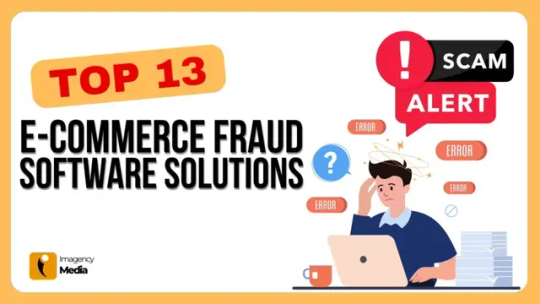#e - commerce
Explore tagged Tumblr posts
Text

90 notes
·
View notes
Text
Omg guys it’s been 7 days since I migrated to Etsy and Guess what 😁 we just made our first sale 👏 all that research worked 🎉

#just starting out#new shop#startup#e commerce#poster#tshirt#ecommerce#redbubbledesigns#etsysmallbusiness#artists on etsy#etsyseller#level up journey
28 notes
·
View notes
Text
A (non-exhaustive) list of RedBubble alternatives
Marketplaces:
Vida
Zazzle
TeePublic
Threadless
CafePress
Dropshippers (Integrate into your own Etsy, Shopify, and/or online store):
Printful
Printify
CustomCat
TPop
JetPrint
TeeLaunch
Gelato
Apliiq (apparel only)
AOP+
Obviously this is not an exhaustive list of print-on-demand sites and services, but it's pretty extensive and should have something on it to fit everyone's needs.
127 notes
·
View notes
Text






Visit my Etsy for more
Please credit styledbysaturno if you use on Instagram or Pinterest
#etsy digital products#etsystore#etsyfinds#artists on etsy#fashion collage#digital scrapbooking#gucci#thierry mugler#valentino#ss25#runway show#moodboard#clean girl#clean moodboard#photography#house design#house decor#wall art#wallpaper#tote bag#bohochic#aesthetically pleasing#twitter header pack#gg icons#pinterest#e commerce#small business#lgbtqstyle#t shirt design#light academia
4 notes
·
View notes
Text
Shadowfax Expands Reach With Launch Of Distribution Centre In Port Blair
PORT BLAIR: Logistics firm Shadowfax, on Monday, announced the opening of its inaugural hub and distribution center in Port Blair. The company calls it a significant milestone in its journey to reach 100% or almost 20,000 pincodes of India by March’2025.

Abhishek Bansal, Co-founder & Chief Executive Officer at Shadowfax
With the newly established hub in Port Blair, Shadowfax aims to foster inclusivity in its service network, ensuring every corner of the country receives seamless access to its array of offerings. E-commerce enterprises, Small and Medium-sized Enterprises (SMEs), Direct-to-Consumer (D2C) brands, marketplaces, and most importantly the island’s residents can anticipate a comprehensive suite of services, spanning from Reverse Logistics to Express Delivery.
Leveraging strategic partnerships with leading airline companies, Shadowfax plans to deliver speed and efficiency, including assured Next-Day Delivery to the island. It will also provide reverse shipping services, doorstep quality checks, and hand-to-hand exchanges. The island customers can also expect location-based delivery via Shadowfax’s proprietary product SF Maps — an AI-driven mapping system.
Abhishek Bansal, Co-founder & Chief Executive Officer at Shadowfax, said in a statement,” This milestone marks a pivotal moment in Shadowfax’s mission to connect every town and village, in the remotest part of the country, into our network — delivering new age solutions to every customer. Port Blair holds immense importance in India’s landscape, and we are thrilled to bring our unparalleled logistics expertise to its citizens.”
#3rd party logistics#deliveryservice#ecommerce#supply chain management#logistics#logistics services in india#courier delivery service#same day delivery#shadowfax#d2c#next day delivery#delivery#forward parcel#festive delivery#logistics solutions#logistics sector#quick commerce#e commerce#shadowfax prime#shadowfax delivery partner#port blair
2 notes
·
View notes
Text
Best SEO tools
Yoast SEO Yoast SEO is a powerful WordPress tool that optimizes websites for better search engine performance, enhancing visibility and helping achieve higher Google rankings. It streamlines the SEO process, making it straightforward to increase site reach and ranking potential.
Key Functions of Yoast SEO
On-Page SEO Analysis Yoast offers real-time on-page SEO analysis, suggesting improvements for keyword density, meta descriptions, titles, and headings. This helps in refining content for better SEO.
Readability Analysis The Readability Analysis feature makes content more engaging and user-friendly by recommending improvements to sentence structure and paragraph length.
Meta Tags & Snippet Optimization Yoast allows you to create custom meta tags and snippet previews, boosting click-through rates by optimizing how your content appears in search results.
XML Sitemaps Yoast automatically generates an XML sitemap, helping search engines easily discover and index your site content.
Schema Markup This feature provides easy integration of schema types like articles, business info, and events, resulting in rich snippets that improve user engagement.
Canonical URLs Canonical URLs help manage duplicate content, which is essential for better indexing and SEO performance.
Breadcrumbs Control Yoast’s breadcrumb feature enhances navigation, lowers bounce rates, and improves SEO by organizing content hierarchy.
Social Media Integration By adding Open Graph Metadata, Yoast optimizes content for platforms like Facebook, LinkedIn, and Twitter, improving visibility and engagement.
WooCommerce WooCommerce is a versatile, open-source e-commerce platform for WordPress, ideal for all business sizes. It offers customizable online stores, secure transactions, and powerful SEO features to enhance product visibility.
Key Functions of WooCommerce
Easy Setup & Customizable Products WooCommerce’s user-friendly setup allows quick store launch, with options for digital, grouped, or physical products to suit varied customer needs.
Payment Gateway Integration Supports multiple payment types like credit cards, PayPal, and Stripe, providing a seamless checkout experience.
Inventory & Shipping Management Inventory tracking and flexible shipping options make it easy to manage stock and meet diverse customer demands.
Tax Management Automated tax calculations simplify compliance with location-based tax rates.
Extensions & Mobile-Friendly Design WooCommerce offers various extensions and themes for store customization, with a mobile-friendly design to ensure a seamless experience across devices.
Here’s a refined draft that highlights your team’s expertise, affordable pricing, and experience in Yoast SEO and WooCommerce. I’ve organized the information to reflect your strengths and service offerings in a client-focused format. Reach out to us by clicking here

#wordpress#web design#website#ecommerce website development#e commerce#web development#seo services#seo#digitalmarketing#smm#marketingtrends#emailmarketing#malware
2 notes
·
View notes
Text
Emtechre Digital Agency: Your Gateway to Exceptional Web Design
Emtechre Digital Agency: Your Gateway to Exceptional Web Design Today, for your company’s online success, a professionally designed website can make a difference. We at Emtechre Digital Agency are devoted to designing websites that are visually stunning and have high functionality that enthrall the audience and yield tangible results.
We have a team of talented designers and developers who are capable of making your online presence a powerful tool for growth. After all, we realize that your site means more than just some web pages; it represents your brand as well as a vital point of contact with potential customers.
Our approach to web design is based on providing outstanding user experience. The website must be intuitive, visually beautiful and easy to navigate. Consequently, by implementing latest industry standards and best practices, we develop seamless and engaging user interfaces which will impress the visitors in an enduring way.
Emechre Digital Agency is proud to offer you customized solutions for your needs. We know every business has different goals and needs. Our team will cooperate with you in designing and deploying a solution that suits your vision whether it is a sleek informative website, a robust e-commerce platform or dynamic web application.
We are naturally built to stay ahead of the rest. We keep up with new technologies and trends so that your website remains modern, functional, and future-proof. From mobile first design that optimizes well for different devices, to incorporating interactive elements that enhance user engagement, we infuse innovation into every aspect of our web design process. Our partnership with clients is based on integrity and openness. We value your contributions and opinions, believing that a successful website is a result of teamwork. All through the web designing journey, we keep you posted by giving updates frequently and seeking for your feedback so as the final product will be beyond your expectations.
In conclusion, Emtechre Digital Agency is your go-to partner for web design excellence. Our team of experts combines artistic creativity with technical prowess to create stunningly beautiful websites that move your business forward. Employing an approach that is aimed at addressing the users’ needs, offering tailor made solutions as well as being committed to technological change leadership; we will ensure you make an impressive online footprint. Trust Emtechre Digital Agency to transform your website into a powerful asset that sets you apart from the competition and propels your business to new heights.
#web design#web development#webdesign#website#digital agency#digital marketing#e commerce#web developers#software#ads#google ads#social media management#seo services#seo#digitalmarketing#desing
11 notes
·
View notes
Text
2 notes
·
View notes
Text

Join us to become advance future Online Business Owner. Stay updated with trends, best practices, and insights from our team.
#webcore#web template#web design#website#business#branding#seo services#digital marketing#web development#e commerce#coding#ecommerce#artificial intelligence#online#commercial#wearable tech#smart home devices#laptops and computers#gps and navigation#office electronics#computing#computer#technolog#workplace#solution#writers on tumblr
2 notes
·
View notes
Text

Top E-Commerce Fraud Prevention Software Solutions
In today’s rapidly evolving digital landscape, e-commerce has become a cornerstone of the global economy. However, this growth has also given rise to sophisticated fraud schemes that pose significant risks to online businesses and their customers. To combat these threats, businesses must invest in robust fraud prevention software solutions. Here’s a look at some of the top e-commerce fraud prevention tools for 2024 that can help safeguard your online store and maintain customer trust.
1. Fraud.Net
Fraud.Net stands out as a comprehensive fraud prevention platform that uses machine learning and artificial intelligence to detect and prevent fraudulent transactions. Its real-time risk scoring system evaluates each transaction based on a multitude of factors, such as user behavior and historical data, to flag suspicious activities. Fraud.Net's integration with various payment gateways and its customizable rule set make it a versatile choice for businesses of all sizes.
2. Signifyd
Signifyd is renowned for its 100% financial guarantee on fraud protection, offering a unique proposition in the e-commerce space. The platform uses a combination of machine learning and human expertise to analyze transactions and identify potential threats. Its approach includes real-time decision-making and an extensive global data network, ensuring that businesses can reduce false positives while minimizing fraud losses. Signifyd also provides tools for chargeback management and fraud analytics.
3. Kount
Kount offers a powerful fraud prevention solution that leverages AI and machine learning to provide real-time fraud detection and prevention. Its platform includes features such as biometric identification, device fingerprinting, and risk scoring to help identify and mitigate fraudulent activities. Kount’s customizable rules engine allows businesses to tailor their fraud prevention strategies to specific needs, while its comprehensive dashboard provides actionable insights into transaction trends and fraud patterns.
4. Sift
Sift is a leading fraud prevention solution that combines machine learning with a vast database of global fraud signals to deliver real-time protection. The platform is known for its adaptability, offering tools to prevent fraud across multiple channels, including payments, account creation, and content abuse. Sift's advanced analytics and customizable workflows help businesses quickly respond to emerging fraud threats and reduce manual review processes.
5. Riskified
Riskified specializes in enhancing the online shopping experience by providing a fraud prevention solution that guarantees approval of legitimate transactions. The platform uses advanced machine learning algorithms and a vast dataset to analyze transactions and identify fraudulent activities. Riskified’s unique chargeback guarantee ensures that businesses are protected against fraud losses, making it a popular choice for high-volume e-commerce operations.
6. ClearSale
ClearSale is a global fraud prevention solution that combines technology with expert analysts to deliver comprehensive fraud protection. Its system uses machine learning to assess transaction risk and manual reviews to ensure accuracy. ClearSale’s multi-layered approach includes fraud detection, chargeback management, and customer service support, making it a robust option for businesses looking to minimize fraud while maintaining a positive customer experience.
7. Shift4
Shift4 provides a versatile fraud prevention solution that integrates with its payment processing services. The platform uses machine learning to monitor transactions and detect fraudulent patterns in real-time. Shift4’s fraud prevention tools are designed to work seamlessly with its payment gateway, offering a streamlined approach to both transaction processing and fraud detection.
8. CyberSource
CyberSource, a Visa solution, offers a suite of fraud prevention tools that leverage AI and machine learning to protect online transactions. Its platform includes features such as device fingerprinting, transaction scoring, and integration with Visa's global network. CyberSource’s customizable fraud management system allows businesses to tailor their fraud prevention strategies to their specific needs and risk profiles.
Conclusion
Investing in a robust e-commerce fraud prevention solution is essential for protecting your business and customers from the ever-evolving landscape of online fraud. Each of the solutions highlighted above offers unique features and benefits, making it crucial to evaluate them based on your specific needs, transaction volume, and risk tolerance. By choosing the right fraud prevention software, you can enhance security, reduce losses, and provide a safer shopping experience for your customers.
#digital marketing#marketing#business#branding#digital services#social media marketing#ecommerce business#e commerce#ecommerce#google ads
2 notes
·
View notes
Text
DIGITAL MARKETING-WEB PULSE
Digital marketing is a broad field encompassing various strategies and tools used to promote products, services, or brands online. It leverages digital channels and technologies to reach and engage with target audiences. Here’s a breakdown of some key components:
Search Engine Optimization (SEO): Enhancing website content and structure to rank higher in search engine results pages (SERPs), thereby increasing organic (non-paid) traffic.
Content Marketing: Creating and distributing valuable content (such as blog posts, videos, infographics) to attract and engage a target audience, ultimately driving profitable customer action.
Social Media Marketing: Utilizing platforms like Facebook, Instagram, Twitter, LinkedIn, and others to connect with audiences, build brand awareness, and drive traffic.
Email Marketing: Sending targeted emails to nurture leads, engage existing customers, and drive conversions. This can include newsletters, promotional offers, and personalized content.
Pay-Per-Click (PPC) Advertising: Running paid ads on platforms like Google Ads or social media channels, where advertisers pay each time their ad is clicked. This can drive targeted traffic and generate leads quickly.
Affiliate Marketing: Partnering with other businesses or individuals (affiliates) who promote your products or services in exchange for a commission on sales or leads they generate.
Influencer Marketing: Collaborating with influential individuals or creators in your industry to promote your brand or products to their followers.
Analytics and Data Analysis: Using tools like Google Analytics to track and analyze digital marketing efforts, measure performance, and make data-driven decisions.
Online Public Relations (PR): Managing your brand’s online reputation and building relationships with digital media and influencers to gain positive coverage and enhance credibility.
Mobile Marketing: Reaching audiences through mobile devices via mobile apps, SMS, push notifications, and mobile-optimized websites.
Each component works together to create a cohesive strategy that helps businesses achieve their marketing goals, whether that’s increasing brand awareness, generating leads, or driving sales.

#digital art#digital marketing#tech#seo services#ppc services#e commerce#business#design#growth#grow your business#website
2 notes
·
View notes
Text

Some valentines ideas! Get yours now⬇️⬇️⬇️⬇️
Distinguishvis.redbubble.com



#just starting out#new shop#redbubble#startup#e commerce#poster#redbubbledesigns#tshirt#ecommerce#ai art#style#gift ideas#valentines day#love#lovers#i love you#love quotes#typography#valentines gifts#valentines aesthetic#happy valentines#romance#romantic
7 notes
·
View notes
Text

Learn how to set up the perfect white background for product photography and capture images that sell.
3 notes
·
View notes
Text
Nykaa, Licious amp up quick commerce game as consumers demand instant gratification
Beauty retailer Nykaa has launched a 10-minute delivery pilot in Borivali, Mumbai, as the rapid growth of quick commerce starts disrupting multiple product categories, pushing vertical players to find ways to drastically speed up deliveries.
Direct-to-consumer meat brand Licious is piloting deliveries of ready-to-eat food items in certain locations in Gurgaon in about 15 minutes though its promise remains half-an-hour delivery, while top fashion platform Myntra is piloting a 4-hour delivery plan in four cities, including New Delhi and Bengaluru.
Delivering instant gratification is clearly the need of the hour.
Nykaa’s quick commerce testing comes at a time when beauty has emerged as one of the top grossing categories on rapid delivery platforms such as Blinkit, Zepto, Swiggy Instamart and BigBasket’s BB Now.
The Mumbai-based beauty retailer is expected to add more pin codes in Mumbai for 10-minute delivery.
It plans to undertake a major update on its platform to launch the service in more locations, people aware of the matter told ET.
It is likely to have a separate brand name as well, they said.
“Certain low-priced items such as kajal pens, foundations or daily-use skincare items are finding traction on quick commerce…and platforms such as Nykaa stand to lose,” a senior quick commerce executive told ET. “Same goes for other categories such as fashion, home decor…where more vertical platforms will do quick deliveries.”
The CEO of a top quick commerce player said beauty in select stock keeping units (SKUs) are seeing one of the fastest growth rates among the new-to-quick commerce segments.
Industry executives, however, said that while horizontal quick commerce platforms such as Blinkit and Zepto are likely to retain a stronghold in grocery deliveries, there is a play in quick commerce for vertical platforms with a wide range of SKUs and deep supply-side relationships.
An email sent to Nykaa didn’t elicit any response until press time Tuesday. Licious also did not comment.
The Bengaluru-headquartered online meat shop “has been conducting one-to-two-hour deliveries in major markets and often delivering ahead of the promised time,” a person aware of the matter said. “In Gurgaon, there is a new experiment to reduce the time even further based on the density of orders,” the person added.
These developments come at a time when large horizontal e-tailers are firming up their quick commerce play. While Flipkart has launched its 10-minute delivery service Minutes in Bengaluru, Delhi-NCR and Mumbai, Amazon is working on its Q-commerce offering, ET has reported earlier.
Last week, Swiggy started the 10-minute food delivery service Bolt, and it is understood that its rival Zomato is planning to bring back a 10-minute food delivery option for certain items, too, in partnership with top cafes and quick service restaurants.
ET had reported earlier that even logistics players such as Delhivery, Shadowfax, Ecom Express and Xpressbees are entering the quick commerce space.
Also Read | Tiger Global conducts due diligence of Zepto dark stores as it eyes quick commerce
Beauty and the quick beast
Nykaa initially plans to take about 5% of its total SKUs to the quick commerce offering as it sees certain kinds of products being ordered for quick delivery, people cited above said.
Multiple industry executives told ET that several brands — depending on the category — are increasingly moving to same-day delivery in top metros, underscoring the changing nature of delivery expectations from consumers.
“This is what’s leading to the dynamic changes. You don’t want to wait for a basic kajal for two days. These products are selling fast and consumers want them instantly,” a senior quick commerce executive said.
Nykaa has been offering same-day delivery for orders placed before 12 pm and next-day deliveries are done for orders after 12 pm in four metros.
“For Nykaa, they already see about 10–15% of orders in the top four metro cities being delivered the same day while 85–90% of the orders get delivered by the next day,” a person aware of the numbers said.
A recent note from JP Morgan said Nykaa’s premium portfolio is growing the fastest. “Nykaa sees no major impact from increasing proliferation of quick commerce on account of its skew towards more beauty products (80–85% mix) and tier-II+ cities (66% contribution). Nevertheless, Nykaa aims to enhance same day/next day order delivery rate to 65% of orders in top 12 cities and 60% of the orders from top 110 cities through higher efficiency of its supply chain network and expects no major investment in the initiative,” the report said.
In August, Varun Alagh, cofounder and CEO of direct-to-consumer beauty and personal care brand Mamaearth, had said during the company’s analyst call that quick commerce was the fastest growing sub-segment within its online commerce channel. He had pointed out that quick commerce sales — most of which were coming from top 10 cities — contribute over 10% of the company’s online revenue.
Beyond instant gratification
Quick commerce along with highly competitive new brands is speeding up the premiumisation trend in the country, CLSA said in a recent note.
“We agree that quick commerce will accelerate premiumisation, but note the competitive intensity in premium categories is even higher than in standard categories, especially as new entrants are likely to target higher gross margin categories. This is especially evident in categories such as premium personal care, beauty, premium foods and premium home care, where competitive intensity from new entrants is the highest,” the brokerage said in the note dated September 24.
During the ET Startup Awards 2024 ceremony held on October 5, a panel discussion chaired by Infosys chairman Nandan Nilekani threw light on the rise of instant gratification in Indian consumption.
During the course of the discussion, Zepto cofounder and CEO Aadit Palicha said the rise of quick commerce was on account of factors beyond just instant gratification.
“When you look at why quick commerce is working in India, it’s largely because we’ve been able to cater to ‘small ticket multiple times a week’ use case that is unique to Indian commerce,” Palicha said. “If you go to the West, for example, it’s precisely the opposite — it (grocery shopping) is large baskets one or two times a month. The average frequency of transactions in India on grocery household essentials is 2.2 times a week… In the US it’s 2.4 times a month.
#3rd party logistics#ecommerce#logistics#supply chain management#deliveryservice#same day delivery#next day delivery#festive delivery#quick commerce#courier delivery service#d2c#instant delivery#e commerce#reverse parcel#delivery
2 notes
·
View notes
Text
Boycott Israel
and another thing, ima about to fuck with yall's websites. gotta do that whole shit over bc guess what
Wix Squarespace are affiliated with Israli bigtech. (squarespace actually is based in Israel) Shopify is Canadian web.com is American IONOS is German
godaddy bought an Israli company, I wont boycott companies unless they are significant to Israeli industry. I want to clarify this is not out of hate this is a way to be heard. The purpose of boycotting is to create a dip in sales that gets noticed by big businesses. This can be used as leverage but more of a push to do the morally correct thing. Do not do things out of hate or anger, okay?
Funny how Israel's tech industry is so big but there's poverty next door. What can BIGTECH do to nourish the general welfare surrounding Israel?
#man ik some of yall got online business#just invest into something new when you get the next chance ok no stress#bigtech#technology#e-commerce#e commerce#this was my 222 post#spiritual shit ftw#blog#free palestine#israel boycott#israel occupation#Israel#palestine#west banks#gaza#gaza strip#human rights#social justice#post#blogging#wzup#wzuplovely#wix#shopify#marketing#ionos#web.com#website#developement
8 notes
·
View notes